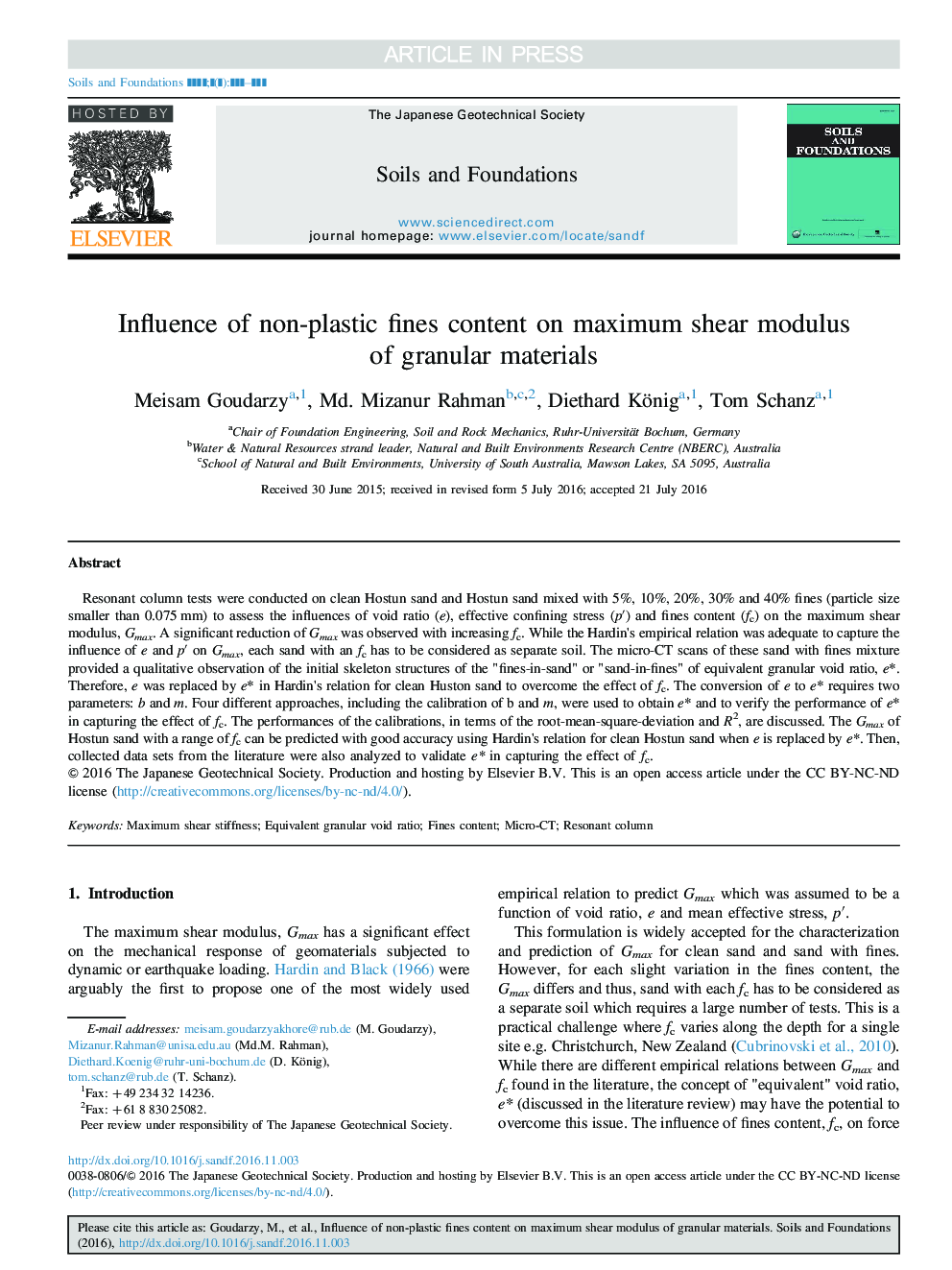| Article ID | Journal | Published Year | Pages | File Type |
|---|---|---|---|---|
| 4927699 | Soils and Foundations | 2016 | 11 Pages |
Abstract
Resonant column tests were conducted on clean Hostun sand and Hostun sand mixed with 5%, 10%, 20%, 30% and 40% fines (particle size smaller than 0.075 mm) to assess the influences of void ratio (e), effective confining stress (pâ²) and fines content (fc) on the maximum shear modulus, Gmax. A significant reduction of Gmax was observed with increasing fc. While the Hardin׳s empirical relation was adequate to capture the influence of e and pâ² on Gmax, each sand with an fc has to be considered as separate soil. The micro-CT scans of these sand with fines mixture provided a qualitative observation of the initial skeleton structures of the "fines-in-sand" or "sand-in-fines" of equivalent granular void ratio, e*. Therefore, e was replaced by e* in Hardin׳s relation for clean Huston sand to overcome the effect of fc. The conversion of e to e* requires two parameters: b and m. Four different approaches, including the calibration of b and m, were used to obtain e* and to verify the performance of e* in capturing the effect of fc. The performances of the calibrations, in terms of the root-mean-square-deviation and R2, are discussed. The Gmax of Hostun sand with a range of fc can be predicted with good accuracy using Hardin׳s relation for clean Hostun sand when e is replaced by e*. Then, collected data sets from the literature were also analyzed to validate e* in capturing the effect of fc.
Keywords
Related Topics
Physical Sciences and Engineering
Earth and Planetary Sciences
Geotechnical Engineering and Engineering Geology
Authors
Meisam Goudarzy, Md. Mizanur Rahman, Diethard König, Tom Schanz,
